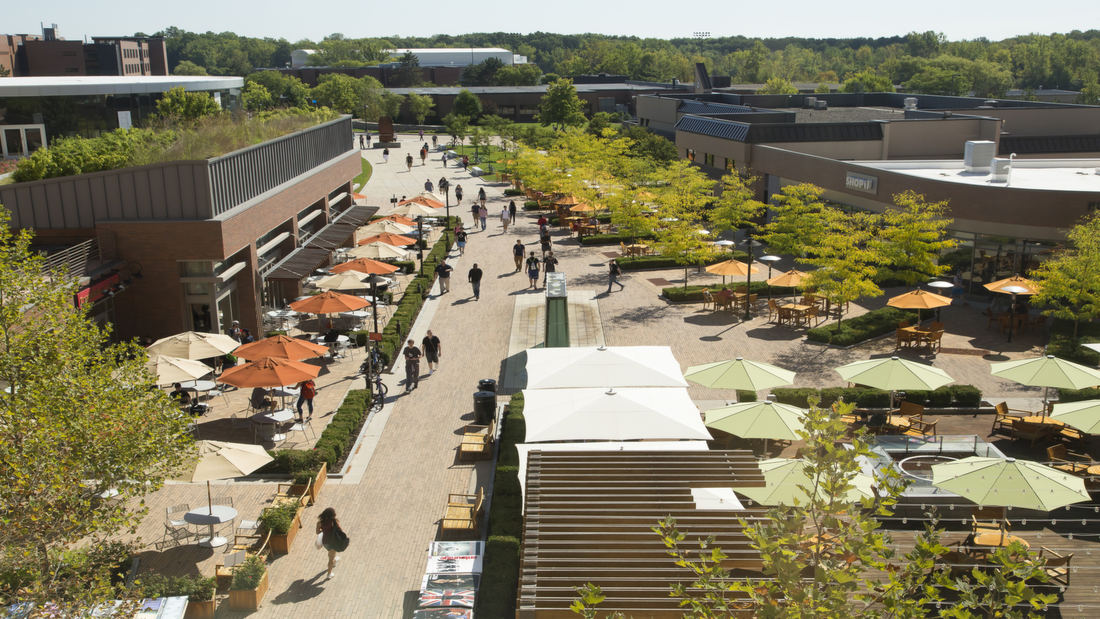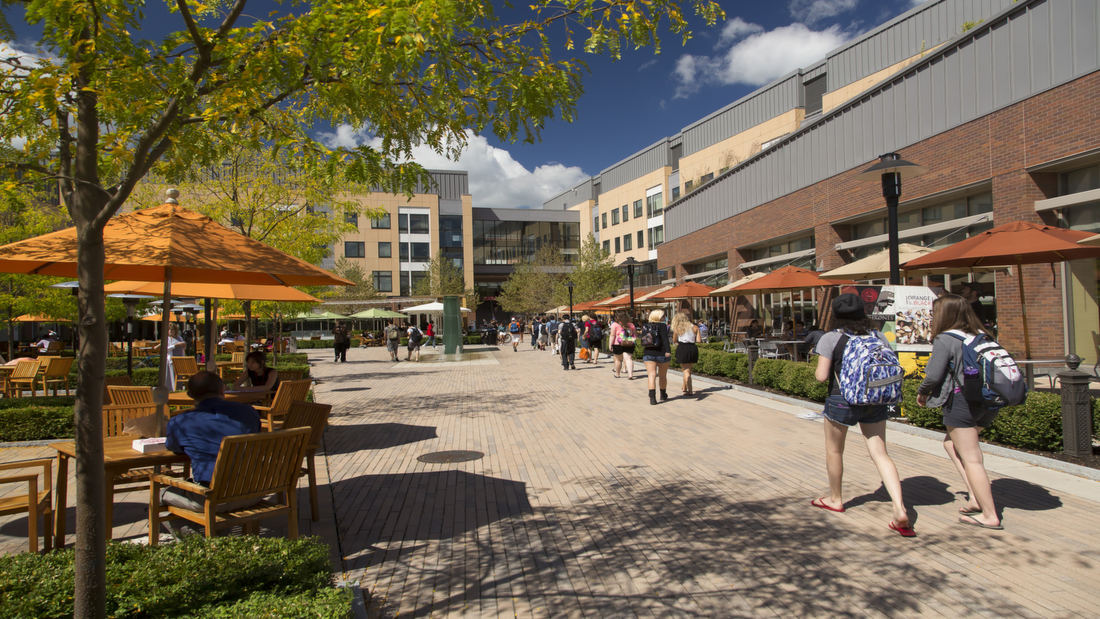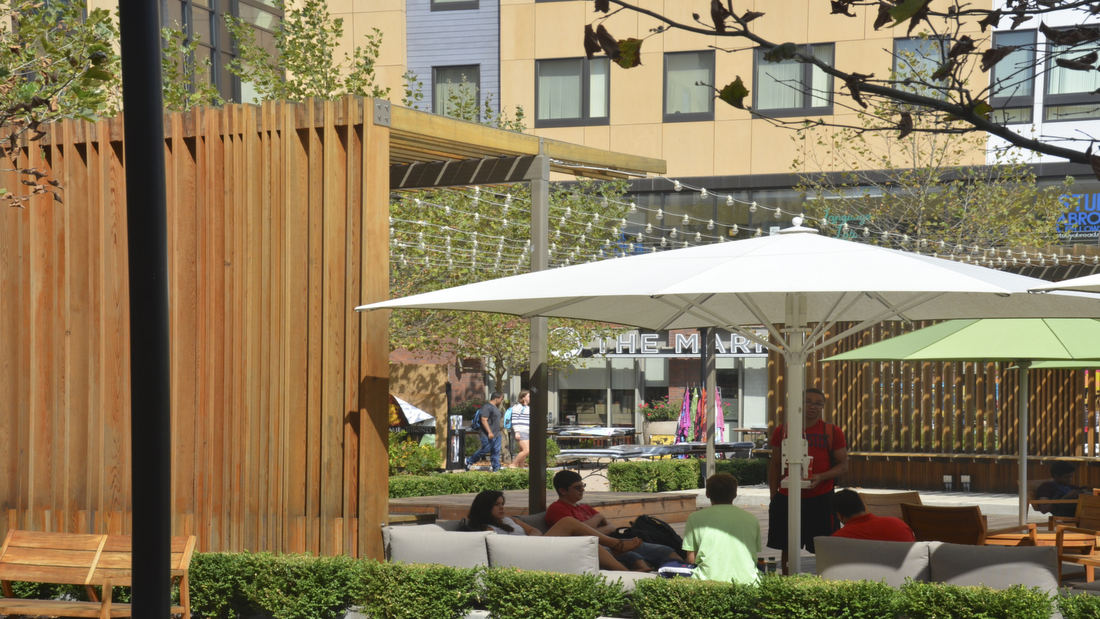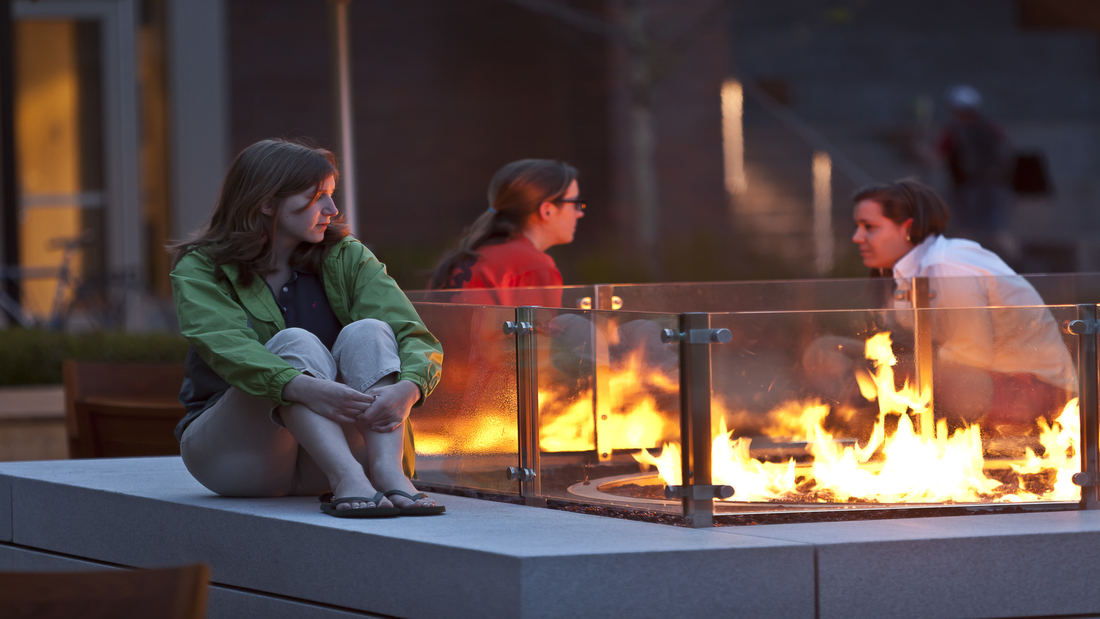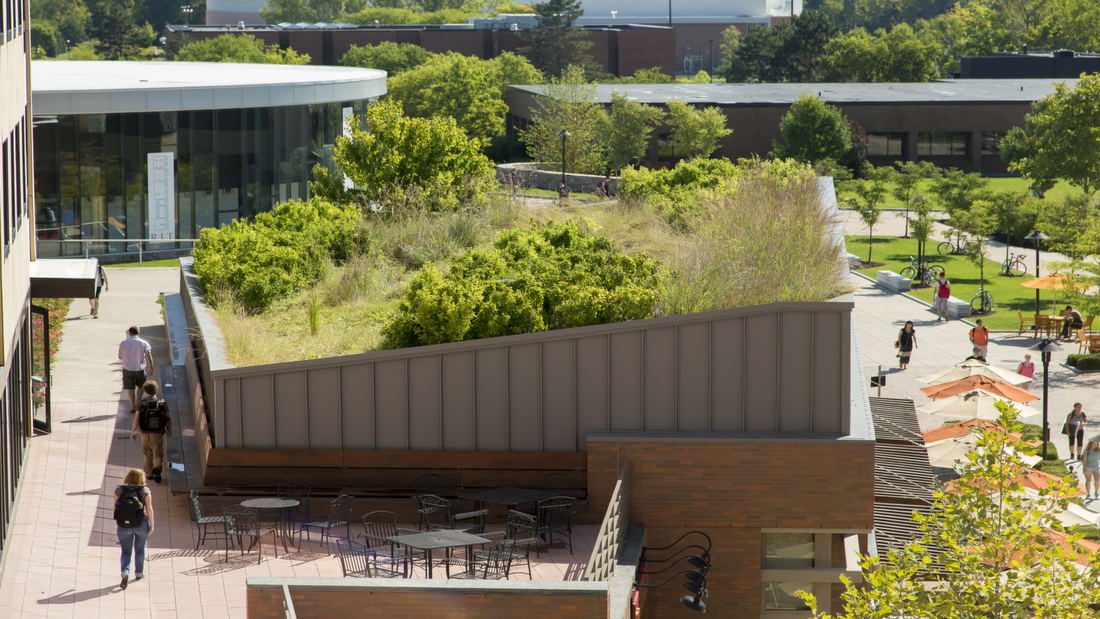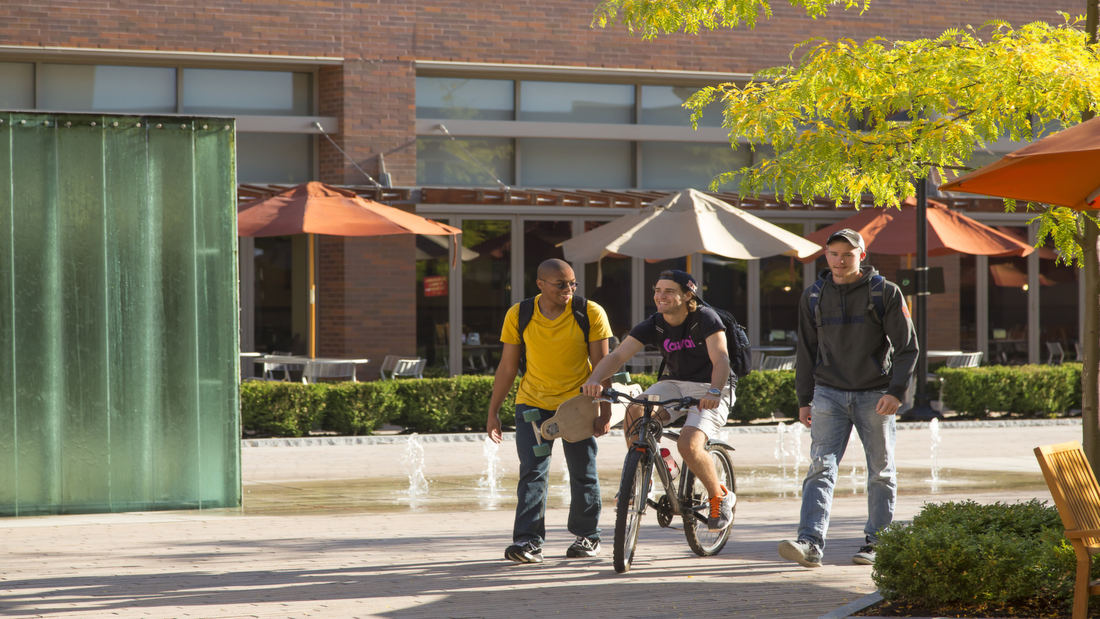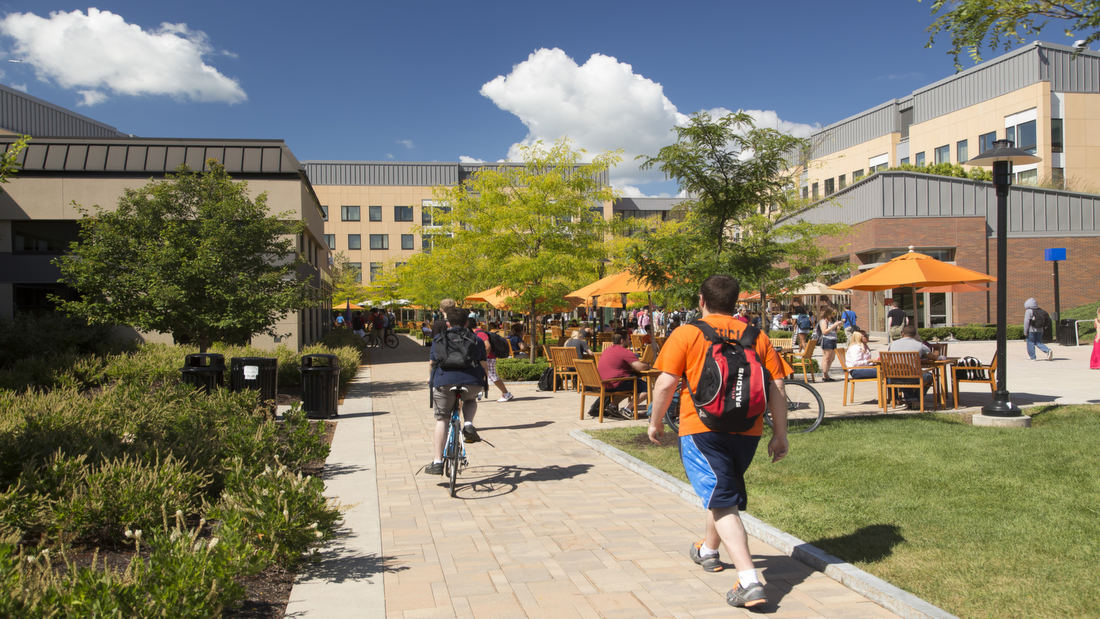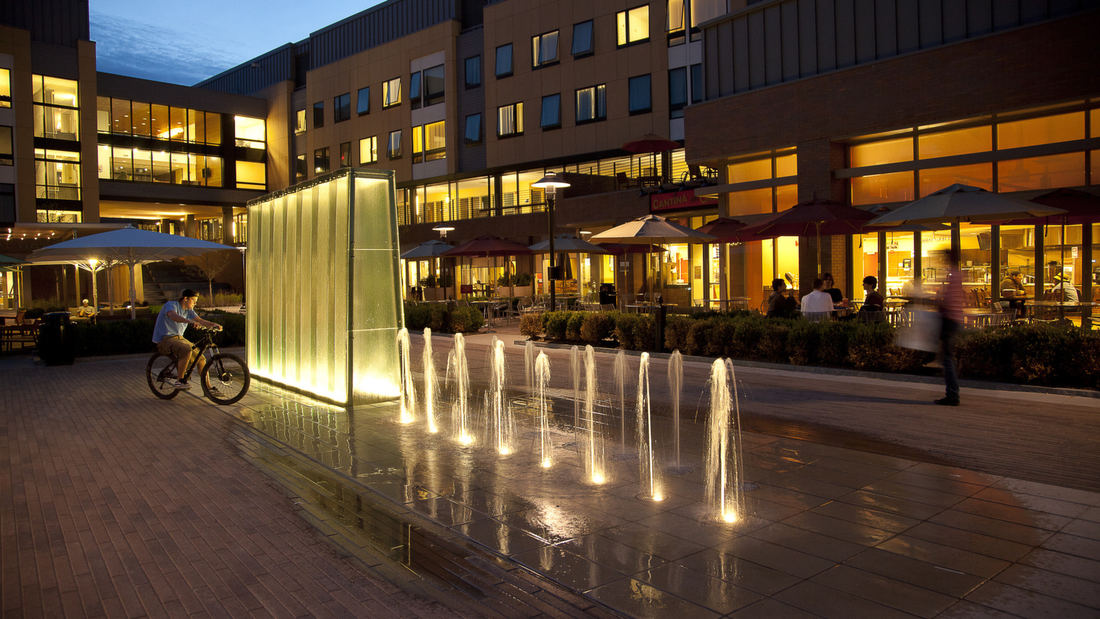Global Village, a pedestrian-only infill neighborhood adjacent to Rochester Institute of Technology’s academic core, and its mixed-use centerpiece, Global Plaza, create a social heart for 17,200 students and 3,600 faculty and staff. The landscape architects and architects collaborated on an urban design that establishes multiple “crossroads” to foster walking between classes and previously isolated campus buildings and parking. Also integrated are earlier “floating” buildings, including a one-story campus café/cafeteria, a cluster of Greek houses, and the new glass Innovation Center. Multiple portals and entrances, two grand stairs—popular for people watching—and an outdoor space network on two levels enmesh the neighborhood into the campus’ hilliest area and make walking there enjoyable. In all, Global Village provides housing for over 400 students in the initial phase and is planned for 800-1200 additional students, tripling the number that can live amidst a sophisticated, active zone. Global Plaza provides a mosaic of dining, studying, and socializing spaces, including a permeable café region and restaurant terrace with seating for over 300, a central outdoor lounge with resort-style deep seating, fire pit and trellis-framed performance area, and a south-facing, conical lawn “beach.” An internally-lit, faceted, patterned glass fountain located at the intersection of the plaza’s pedestrian flows serves as a meeting place year round.
The plaza remains in use during Rochester’s cool weather thanks to user-operated timed gas heaters in the café seating zone, umbrellas for hot or drizzling days, and a fire pit in the central lounge. In the coldest months, the lounge may be cleared, lined, and flooded to transform into a small skating rink. During warmer months, the University programs the plaza with almost daily events including performances, festivals, and other student gatherings. Large canopy tree species, generally absent on campus, will over time reinforce Global Plaza as a landmark for RIT. The project’s compact layout, pedestrian orientation, bicycle facilities, planted roof, distributed rain gardens and provision for summer shade contributed to the project’s LEED Gold rating. Sustainable materials include ungrouted pavers, mostly manufactured within 500 miles, and plantation-grown 2x lumber for the trellises and bike parking canopies. Global Plaza instantly became the campus social hub and Global Village its most popular housing when completed in Fall 2010. “It’s been a great gathering place, the kind of common square you see in great cities” noted Mary-Beth Cooper, RIT’s Senior Vice President for Student Affairs. Dr James Watters, RIT’s Senior Vice President for Finance & Administration, says, “The plaza is a huge success. We had kids sitting out deep into the fall, which, given our weather, is exceptional.”
Federal Reserve Bank of Dallas
This office building’s roof garden celebrates a potent image of the native Texas landscape: the level, grass-covered plains emerging from a wooded riparian area. A design vocabulary of native, drought-tolerant plant materials, especially selected to react to light and air movement, reinforces this design approach. The project serves as a two-acre rooftop garde...
University of Chicago Booth School of Business
This project regenerates a spectacular, historic cliff-side waterfront site by activating it with new purpose. Working carefully to interweave layers of preservation and natural beauty, the building and landscape work together to leave a light footprint. Today, a distinctive global campus honors the history of its earlier occupation while providing inspiration...
Poly Zhuhai
Large, flexible spaces offer both intimate and grand experiences.
This large mixed-use development located at the central axis of Hengqin Island, which was created from landfill near Macao. The site is to the south of the small Hengqin Mountain, facing a civic sports park on the other side.
The main office tower has a large, square footprint, elev...
Kaohsiung Waterfront Renovation
SWA, in association with Morphosis Architecture and CHNW, developed a vision for the future of Kaohsiung Harbor Wharfs, which includes 114 hectares of prime waterfront property formerly used for cargo shipping. The site, located in the shipping heart of Kaohsiung, Taiwan, was historically subjected to environmental neglect and rampant uncontrolled development....


